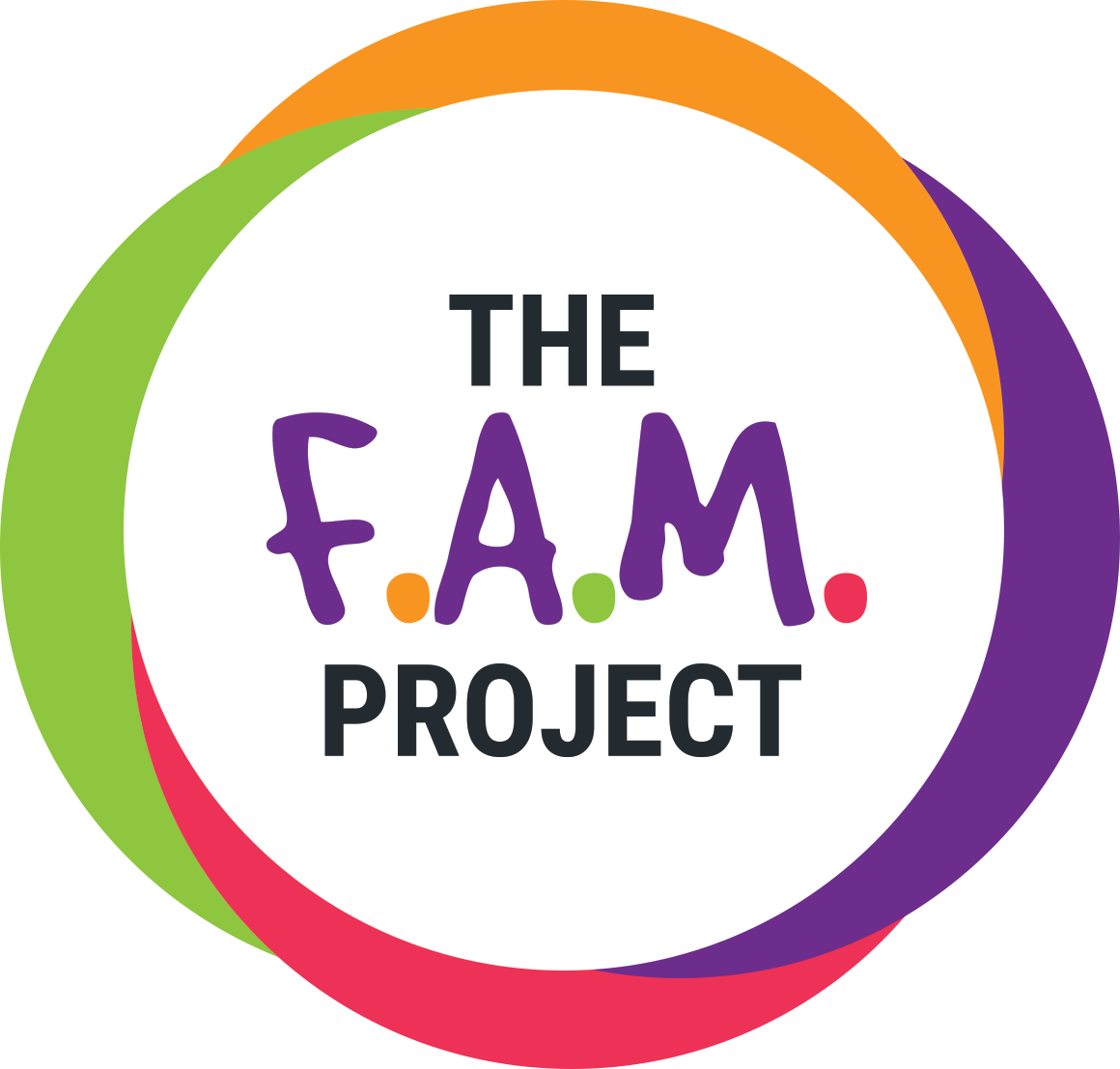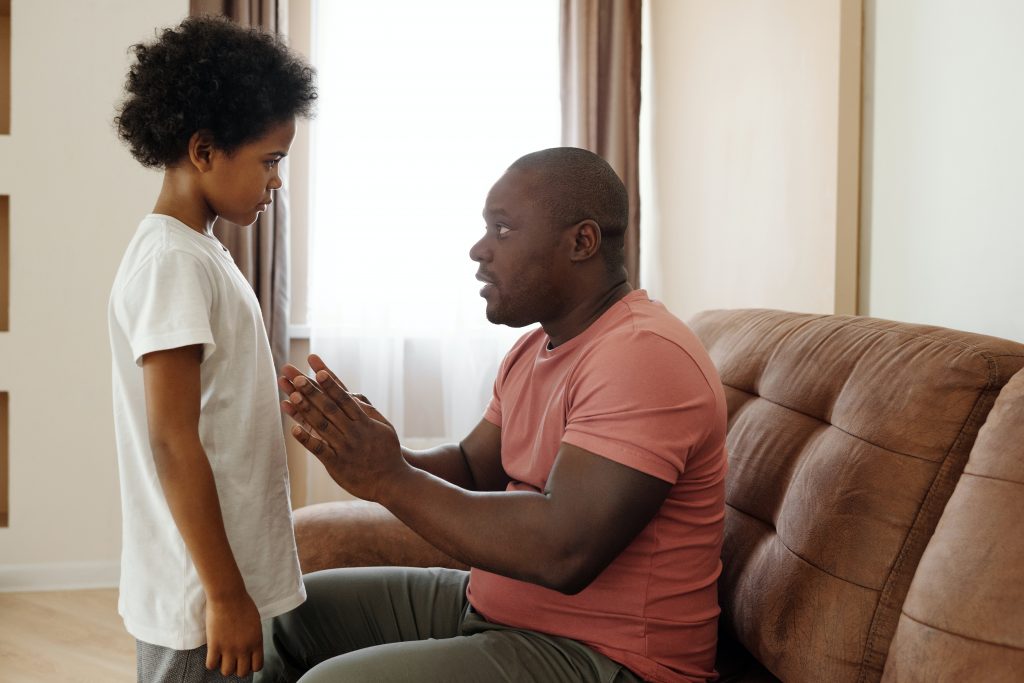What is going on in our world? What can we do about it? And how can we talk about these things in our home? We are all witnessing and/or experiencing so many things that are difficult to process for ourselves, let alone properly discuss them within our own home with our family and friends, or on social media. While The FAM Project is all about doing fun things with your FAM, we must also address the difficulties we experience in our world and in our homes. So, with all these series of unfortunate events that are happening, let’s take a moment to discuss HOW are we handling them.
We should all do our part to be informed as a parent. Our own understanding with the news of the day is important, so that we can approach and engage our children in an appropriate and informed manner. There is definitely a balance though with how much we are filling our own thoughts with and conversing about. What should also be pointed out here is that there are certain levels of appropriate ways we can manage these types of conversations with our children. Now, we can all shake our heads in agreement, but we also know that it is the APPLICATION of it that is the difference maker.
So what are we suggesting? We are proposing to stop and ask yourself what methods may be the most appropriate when relaying, or discussing current events with the children in your own home. Because if it is not the terrible event from today, there will be another event in the future that will take the headlines. World events should not be “swept under the rug” so-to-speak, but when events take place that are catastrophic, they should be discussed at an age appropriate level, especially while speaking with younger children. You know, the old saying of “knowing your audience.” Much in the way that you are not likely to discuss your deep and personal feelings with the grocery store clerk who happens to be a stranger, because that is not the correct audience. The same holds true when talking to your children about the news.. you get the picture.
The very first thing you should be doing is making sure that your mental and emotional space is in the right frame. So whether you learned about tragic news while alone, in a group setting, or directly from your 13 year old – it is essential to take the time you need to process that information and place yourself in a solid, healthy place. ***Always keep in mind – You do not need to immediately respond, seconds after learning of something. It is entirely appropriate to take even a few moments to process the new information and clear your head before responding. The application of this may be to shut your eyes and breath. Count to ten (or 20, 30, 75… whatever you need), center yourself again, and then proceed. Doing this does not shove these emotions down and away, but allows you to now navigate from an emotionally controlled place with your children. Because it is perfectly normal and OK to have strong feelings and actually FEEL THEM. It is what we teach our kids and know to be true for ourselves. If you take this step to balance yourself first, then you can begin the entire interaction about what you have learned about from a good space. Doing so will significantly improve how they will receive your guidance with a decreased level of anxiety and distress.
The next thing to do is to understand your audience altogether. If you have a little one, watching disturbing news while they are awake and around is not a good plan at all, and studies have proven this theory. Dr. Jenny Radesky a developmental behavioral pediatrician who is an instructor at the University of Michigan in Ann Arbor, Mi., has case studies on the behavioral effects that take place in an infant or toddler when exposed to traumatic and violent news. They process stress in fussy, or uneasy behavior. Our #1 job as parents is to PROTECT our little ones from such destructive and disturbing imagery and content. The news is important, but find the time to catch up on the events of the day when you are not in an audible or visual space of your little one.
As you progress in the ages beyond little ones, and into elementary ages, you can begin to address news and social difficulties at an age appropriate level. The advice of professionals is to take the drastic and evil news of the day, such as racism for example, and turn the discussion into glorifying the beauty of diversity. Pediatricians Dr. Jacqueline Dougé and Dr. Ashaunta Anderson make note that elementary aged children are already exposed to racism, and our jobs as parents can be to instruct your children (and by this we mean “be the example!!”) that people are people no matter of their skin color, their race, or their preference of life. ALL differences should be viewed in a way that is productive and not divisive.
Going a step further down the “road to adulthood trail” we encounter the pre-teen and teenagers. Being the father of 4 teenagers I can assure you (if you did not already know), that this age group altogether deserves a different approach. With social media platforms being the norm in the everyday life of an average American adolescence, they are more likely to be the one that immediately approaches you with a smartphone in-hand shoving a Tik Tok video in your face of Atlanta being looted in the aftermath of a peaceful protest gone wrong. This news is not only hurtful to the viewer, it can shape how they think – so knowing the information they are digesting and then discussing it will not only be insightful to you as a parent, but their opinion on such matters can be more greatly understood. As with most teenagers, we know that their involvement in a deep conversation can often result in one word answers, or mumblings that resemble a cave dweller from 200 million years ago. So take that understanding of conversation, and move away from preaching AT THEM and engage in the conversation in a way that REACHES them in a language they can understand, as well as feeling empowered. At that age we can more openly talk about what they are seeing/hearing/learning. We can have a more mature discussion about larger things, such as the context of the bad news for the day, where it came from, and the current impact it is having. Allowing teenagers the space to express how they feel about current world events, gives them a space where maturity and growth can happen. It provides us, the parents, a platform to learn how they feel from it all, and what we can do to help.
Being a great parent is super fun. It is all about making memories, playing boardgames, walks, camping trips and late-night sleepovers. But it is also in the trenches of difficulty. It is in those trenches where we can help our children to forge and craft their own minds to walk away from us better people. A more loving, kind, and accepting person to world around them.
Be encouraged moms and dads – you got this!!! Even if you messed this type of scenario up ROYALLY, you still have an opportunity to respond to difficult things better the next time. Remember… close your eyes, and take a moment to breath. It is in those moments where you collect yourself, and realize the PROFOUND impact that you are having in the life of your child. Once that hard day is done, and you have successfully navigated a challenging news topic – you can celebrate with some ice cream.




